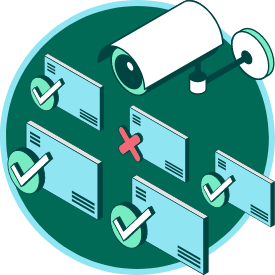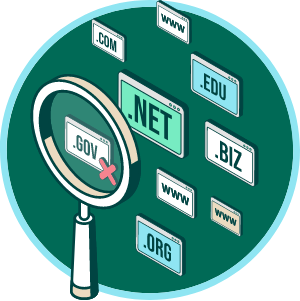Domain impersonation is one of the fastest-growing cyberattack tactics and without the right safeguards, it can cost your organization money, data, and trust. With proactive defense, you can stop these attacks before they reach your employees or customers.
Here’s what you’ll gain by staying ahead of the most common impersonation threats:
Look-alike domains — Detect and block fake websites designed to steal credentials or deliver malware, keeping your team and customers safe.
Email spoofing — Prevent forged emails from ever hitting inboxes, reducing phishing risk and protecting your reputation.
Domain Impersonation Protection Solutions
DMARC Protection for Email Authentication
A powerful way to stop impersonation is by turning on DMARC reject for your email domains. Without it, attackers can send emails that look like they’re from you—misleading customers and damaging your reputation.
With DMARC in place, you can:
Block fake emails before they reach inboxes.
Protect customers, partners, and employees from scams.
Preserve the trust and credibility your brand is built on.
When set up correctly, DMARC works quietly in the background—keeping bad actors out while ensuring your legitimate messages always get through.


Domain Monitoring
Cybercriminals create look-alike domains to trick customers, steal credentials, and damage trust. Tackling these threats alone can be overwhelming—but you don’t have to.
With domain monitoring and DMARC protection, you can spot impersonation attempts early, take them down fast, and ensure your brand—and the people who rely on it—stay safe.
From Detection to Takedown: Total Domain Protection
Stronger Domain Security
Protecting domains and subdomains takes more than most teams can manage alone. Fortra covers detection, analysis, mitigation, and monitoring to stop domains that misuse your brand, steal data, or commit fraud.
Email Defense with DMARC
Cybercriminals use spoofed emails to trick customers and damage trust. Fortra DMARC Protection authenticates your domains to block spoofing, executive impersonation, and spear phishing.
Rapid Takedowns
Finding threats isn’t enough. You need to remove them. Fortra accelerates takedowns of malicious domains, cutting cost and response time while protecting your brand and customers.
